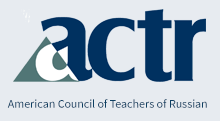Russian Language Journal
Keywords
science, fiction, literature, Russia
Abstract
Anindita Banerjee’s critical reader provides excellent insight into the development of science fiction literature and cinema in Russia from the early nineteenth century all the way to the mid-2000s. The book features four sections, each of them comprising four articles by different authors, and an introduction from the editor. The latter provides a brief but brilliant overview of Russian nauchnaia fantastika, or “scientific fantasy,” positioning it within the context of literary, social, and scientific life in the USSR, as well as outlining the existing scholarship on the topic. From the very beginning, when the genre first emerged at the turn of the twentieth century, through the entire twentieth century, and to its current metamorphoses, the author claims, “science fiction in Russia has been cocreated and coproduced by an astonishingly large community that included scientists and engineers, philosophers and policymakers, social and political activists, journalists, artists, illustrators and, above all, consumers” (xiv). Following this claim, the critical reader broadens the borders of the science fiction canon by adding essays about science and its perception in the USSR, the impact of electrification, cosmic societies, Soviet eugenics, media coverage of spaceflight, and many others. Together, these essays create an amazingly detailed picture and demonstrate that science fiction in Russia has never been limited to a few well-known names, but rather presents a complex literary and social phenomenon, heavily influencing everyday life and being influenced by that same life. The structure of the book and close thematic and/or chronological connections between articles allow for a progressive complication of the material and gradually introduce the readers to an even more detailed perception of the genre and the period in general.
Recommended Citation
Smyslova, A. A., & Portice, A. (2018). Review: Russian Science Fiction Literature and Cinema: A Critical Reader. Russian Language Journal, 68(1). https://doi.org/10.70163/0036-0252.1067

